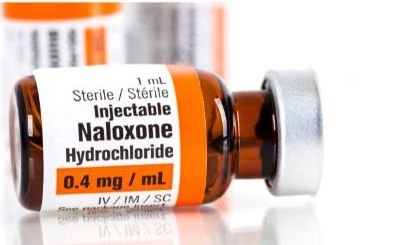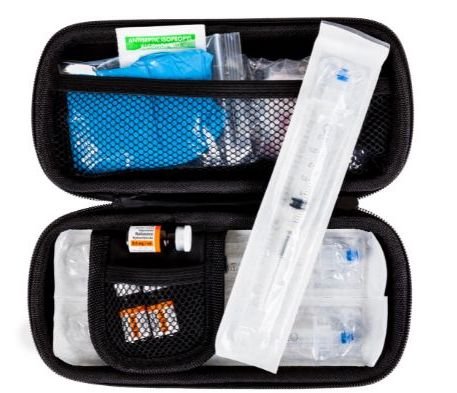Ontario to Mandate Naloxone Kits in High-Risk Workplaces By June 1, 2023
Canada’s Growing Opioid Crisis
The opioid crisis in Canada (driven by both illegal and prescription opioid use) is growing, affecting every region of the country, and continues to be a leading public health and safety concern.
Let’s look at some facts:
Between February 2020 – the month before Ontario declared a State of Emergency due to COVID-19 – and December 2020, there was a 79% increase in the number of opioid-related deaths across the province. (Public Health Ontario)
In 2021, there were a total of 2,819 opioid related deaths in Ontario – the highest number on record and up from 366 in 2003. (Ontario.ca)
So far in 2022 (January – June), 90% of accidental opioid toxicity deaths in Canada occurred in British Columbia, Alberta, or Ontario. (Government of Canada)
96% of confirmed opioid-related deaths in Ontario are accidental in nature. (CCAS)
Employers across Canada have seen an increase in opioid overdoses in the workplace, with construction sites, bars, and nightclubs seeing the biggest impact. The construction industry alone has experienced a staggering 30% of all workplace opioid-related deaths. (Government of Canada)
What is Naloxone?
Naloxone is an opioid antagonist and a life-saving medication. It is a fast-acting drug used to temporarily block the effects of commonly used opioids such as: fentanyl, heroin, morphine, oxycodone, hydromorphone, and codeine. It can be administered by injection or via nasal spray to revive an individual who has overdosed and is unresponsive. Once administered, it can restore breathing within two to five minutes, allowing time for an ambulance to arrive.
NEW Naloxone Kit Requirements in High-Risk Workplaces
Effective June 1, 2023, the OHSA legislative amendment will require high-risk employers to ensure their workplaces are equipped with life-saving naloxone kits and workers are trained on how to administer them. This change hopes to raise awareness around the ongoing opioid crisis, reduce stigma for those struggling with addictions, and ultimately save lives.
The OHSA requires employer to provide naloxone in the workplace if the employer becomes aware, or ought reasonably to be aware, that the three following scenarios exist:
1.There is a risk of a worker opioid overdose:
For example:
If an employer has previously experienced an opioid overdose in their workplace.
If a worker voluntarily discloses an opioid-use issue or risk of an overdose.
If needles or other opioid paraphernalia are found in the workplace.
If the Joint Health and Safety Committee, Health and Safety Representative, Human Resources, and/or someone else discloses this risk to the employer.
Any other information that would lead an employer to reasonably conclude a risk of an opioid overdose in the workplace.
2. There is a risk of a worker opioid overdose happening in the workplace where the worker performs work for the employer.
3. The risk of opioid overdose is posed by a worker who performs work for the employer.
Additionally, should these three scenarios exist, to achieve compliance employers must also:
Provide at least one naloxone kit in each workplace and ensure it remains in good condition.
Ensure workers have received the appropriate training on naloxone, including recognizing an opioid overdose, administering naloxone, and understanding potential hazards related to the administration of naloxone.
Naloxone kits should also be kept in the vicinity of the worker who has received training.
Any additional requirements as may be prescribed by the legislation.
It is important to note that these new OHSA requirements do not apply to a workplace where the risk of an opioid overdose is created by a non-worker, such as a client, customer, patient, or other member of the public who may be present in or near the workplace.
These new requirements will be enforced by the Ministry of Labour, Immigration, Training and Skills Development, through workplace inspections, investigations, orders, penalties, and prosecution.
Ontario’s Workplace Naloxone Program
Beginning December 2022, the Ontario government has introduced the Workplace Naloxone Program, which will provide initial support to employers who are required to comply with the new naloxone requirements. This program will offer employers with free naloxone training for up to two workers per workplace and/or one free nasal spray naloxone kit per workplace.
Employers can visit the following participating providers for more information on how to access this program:
Key Takeaways:
The opioid crisis in Canada continues to be a leading public health and safety concern.
Naloxone is fast-acting and life-saving drug used to temporarily block the effects of commonly used opioids.
Effective June 1, 2023, amendments to the OHSA legislation will require high-risk employers to ensure their workplaces are equipped with naloxone kits and workers are trained on how to administer them.
For a limited time, employers can contact Canadian Red Cross and St. John Ambulance, participating providers for the Ontario Workplace Naloxone Program, to access free naloxone training and kits.







